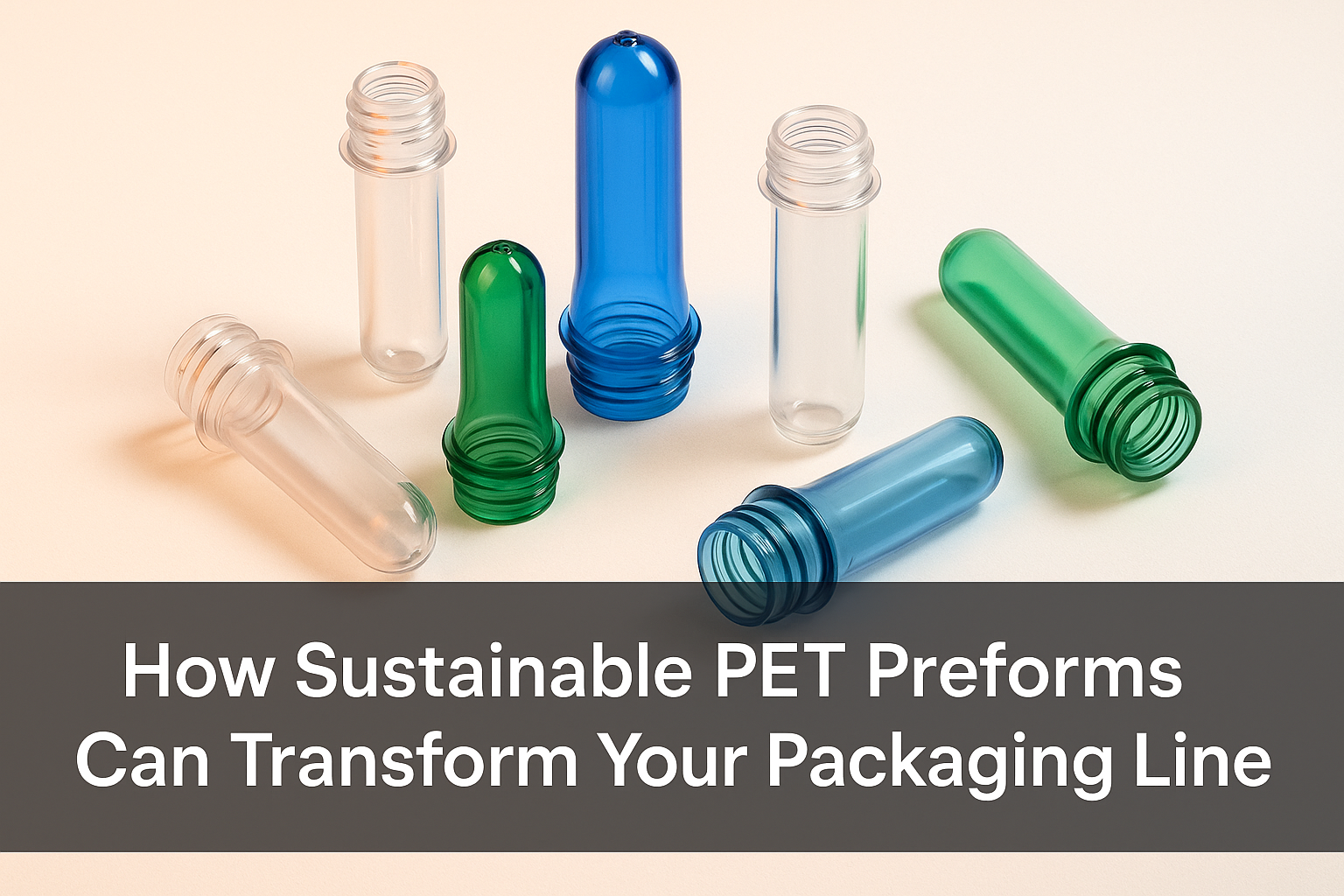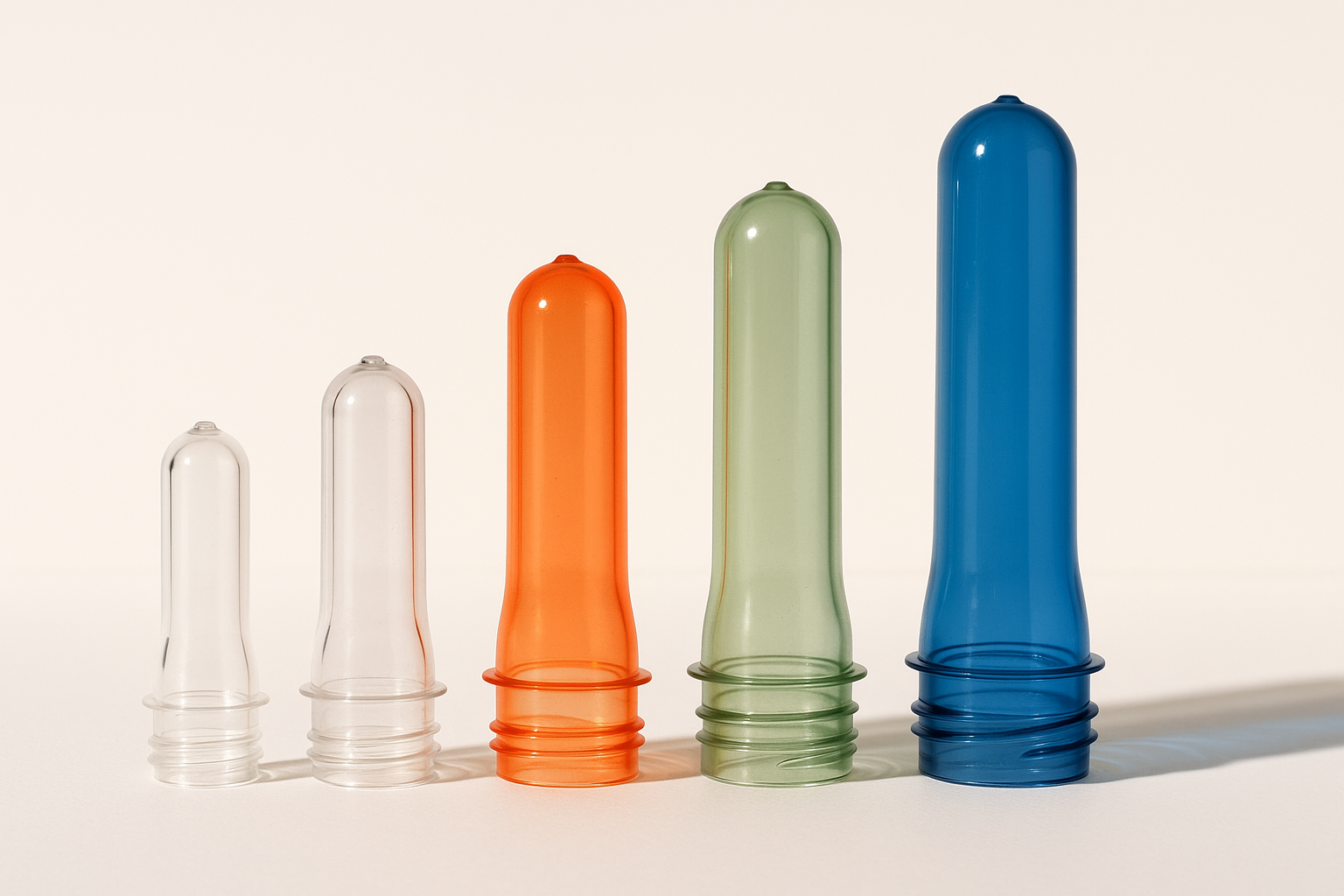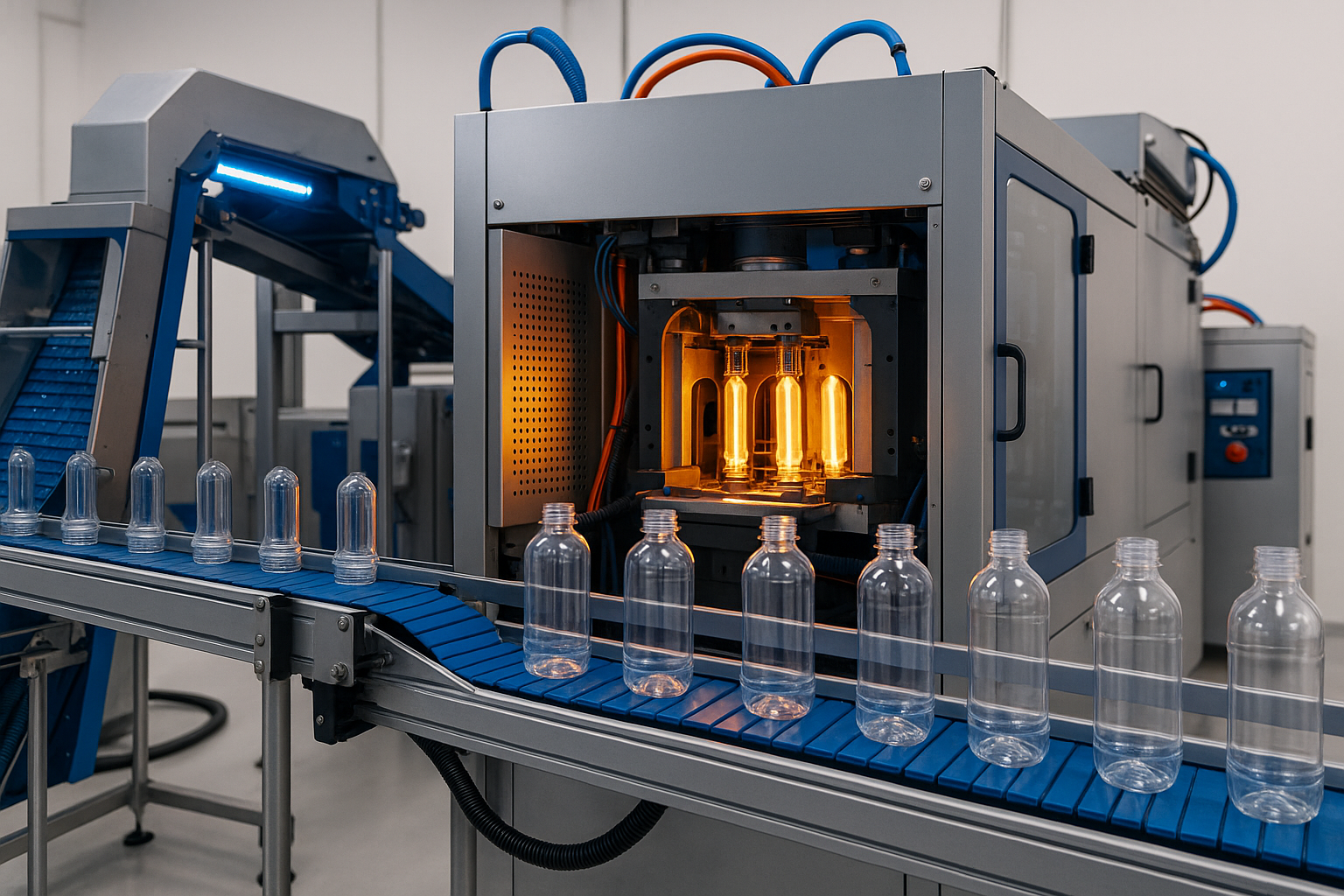How Sustainable PET Preforms Can Transform Your Packaging Line

The world of packaging is changing fast. More and more, businesses like yours are seeking ways to be kinder to our planet. Consumers demand greener products. Governments are introducing new rules. This means every company, big or small, must carefully consider how its packaging impacts the environment.
One powerful solution gaining traction is sustainable PET preforms. These aren’t just a fleeting trend; they’re a smart business choice. They can help you meet environmental goals, improve your brand image, and even boost your bottom line. So, is your packaging line ready for a greener, more efficient future?
So, how can sustainable PET preforms *really* transform your operations? This guide will walk you through the practical steps for a smooth changeover, helping you unlock significant benefits for your business.
Understanding Sustainable PET Preforms: Beyond Just “Green”
When we talk about sustainable PET preforms, we’re exploring various ways to make packaging more environmentally friendly. It’s not about a single material, but rather smart choices that reduce environmental impact.
What Makes a PET Preform “Sustainable”?
There are a few key types of sustainable PET preforms, each with its own advantages:
- rPET (Recycled PET) Preforms: These are made from plastic bottles that have already been used by consumers. We call this post-consumer recycled (PCR) content. Using rPET means we use less new, or “virgin,” plastic. This reduces your carbon footprint and saves valuable resources. The percentage of recycled content can vary, from a small amount to 100%.
- Lightweighting: This is about making preforms and bottles lighter while keeping them strong. Engineers design them cleverly to use less material. Less material means lower costs for you and fewer emissions during transport. Imagine cutting just 2 grams off each bottle – across millions of units, that’s tons less plastic and significant freight savings! Lightweighting can be combined with rPET for an even bigger impact.
- Bio-based PET Preforms: These preforms are made from plant-based materials, not just fossil fuels. For example, some PET can be partly made from ethanol derived from plants. This reduces our reliance on oil. While not as common yet, bio-based options are a promising future direction.
Specifications of Sustainable PET Preforms
| Specification | Description / Value |
|---|---|
| Material Type | PET (Polyethylene Terephthalate), rPET (Recycled PET), Bio-based PET |
| rPET Content Range | 10% to 100% Post-Consumer Recycled (PCR) content, Food-grade options available |
| Neck Finish Standards | PCO 1810, PCO 1881, 30/25 (29/25), 28mm (Standard, Alaska, Bericap), 38mm (Still/Sparkling) |
| Preform Weight Range | Typically 8g to 100g (Lightweighting options available down to 8g for small bottles) |
| Intrinsic Viscosity (IV) | 0.76 – 0.84 dl/g (Tailored for specific applications) |
| Color | Clear, Blue tint, Green tint, Custom colors upon request |
| Barrier Properties | Standard, UV Blocker, Oxygen Scavenger (Optional for extended shelf-life) |
| Production Process | Injection Molding |
| Certifications | FDA compliant, FSSAI approved (for food contact), ISO 9001, ISO 14001 |
| Applications | Beverages (Water, CSD, Juice), Edible Oil, Dairy, Pharmaceutical, Personal Care, Household Products |

The Core Advantages for Your Business
Switching to sustainable preforms offers many benefits:
- Better for the Environment: You will significantly reduce your carbon footprint and send less waste to landfills. This helps protect our planet.
- Stronger Brand Image: Consumers today genuinely care about sustainability. Using eco-friendly packaging, perhaps for a beverage or personal care product, can make your brand look more responsible and appealing, building crucial trust.
- Keeping Up with Regulations: Governments, both in India and globally, are setting stricter rules for plastic use. Adopting sustainable options helps you meet these regulations and truly future-proof your business.
- Potential Long-Term Savings: While there might be initial costs, lightweighting saves material. Also, reducing reliance on virgin plastic can protect you from fluctuating oil prices.
Transforming Your Packaging Line: The Practical Roadmap
Moving to sustainable preforms doesn’t have to be complicated. Here’s a clear, step-by-step approach to make the transition smooth.
Phase 1: Assessment & Strategy (Before You Buy)
Before making any big changes, it’s smart to plan carefully:
- Internal Audit: Look closely at your current packaging line. What materials do you use? What are your machines capable of? What are your overall sustainability goals for your company?
- Material Selection: Choose the right sustainable preform for your product. Do you need a high percentage of rPET? Is lightweighting a priority? Consider what will work best for your specific product and its performance needs. Think about factors like virgin PET equivalent quality.
- Supplier Vetting: Partner with trusted rPET preform suppliers. Look for consistent quality and a reliable supply chain. This is key for smoothly integrating sustainable options that align with circular economy principles.
- Team Alignment: Make sure everyone is on board. Talk to your research and development team, operations managers, purchasing department, and marketing team. Everyone needs to understand the goals and benefits.
Phase 2: Technical Integration & Optimization (On the Line)
Once you’ve chosen your preforms, it’s time to put them into action:
- Blow Molding Machine Adjustments: Sustainable preforms might have slightly different properties than virgin plastic. You might need to make small adjustments to your blow molding machines. This could include changing heating profiles, pressure settings, or cycle times. Ensure your tooling is compatible with any new preform dimensions. These packaging machinery adjustments are typically minor.
- Filling and Capping Line Compatibility: Make sure the new bottles are stable enough for your filling and capping machines. Sometimes, a slightly different bottle design needs careful checks to prevent issues.
- Labeling and Secondary Packaging: If the new bottles have slightly different shapes or surface properties, your labeling machines might need minor tweaks. Check how they fit into your existing cartons or crates.
- Quality Control & Testing: Always test your new sustainable packaging thoroughly. Make sure product integrity, shelf-life, and how the product looks are all up to your usual high standards.

Phase 3: Monitoring, Measurement & Communication (After Launch)
Once you’ve launched, it’s important to track your progress and share your success:
- Performance Tracking: Keep an eye on key operational metrics. These include efficiency of your line, how much waste you’re producing, and your energy consumption.
- Sustainability Reporting: Clearly measure and share the environmental benefits of your switch. This could include how much you’ve reduced your carbon footprint or how you are complying with packaging waste directives.
- Marketing Your Sustainable Edge: Tell your customers about your commitment to sustainability. Use your new eco-friendly packaging to authentically enhance your green brand reputation. This resonates incredibly well with today’s consumers.
Addressing Common Challenges and Maximizing ROI
Any change can come with questions. Here’s how to handle them and get the most out of your investment.
Overcoming Operational Hurdles
You might encounter small challenges, but they are easy to manage:
- Minor Material Property Differences: rPET can sometimes have slight variations in color or strength compared to virgin PET. Good suppliers manage this carefully, ensuring consistency for products like bottled water or detergents. Your team can then learn how to adjust machine settings to handle these minor differences effectively.
- Initial Setup Time: Planning for a smooth changeover is important. You might need a little extra time initially for machine adjustments and testing. This minimises disruptions later.
- Training for Operators: Your machine operators are key. Provide them with proper training on how to handle the new materials and adjust machines. This ensures they are comfortable and efficient.
The Financial Case: Beyond the Green Premium
While sustainable preforms might sometimes have a slightly higher upfront cost, consider the long-term financial benefits:
- Long-Term Savings: Lightweighting directly reduces your material consumption, saving money over time.
- Market Advantage: Being seen as a sustainable brand can attract more customers and increase your market share. This leads to higher sales and profits.
- Grants and Incentives: In some regions, there are government grants or tax incentives for companies adopting sustainable practices. Explore these options.
- Improved Sustainability Metrics for Packaging: Measuring your impact helps you report better to stakeholders and meet corporate social responsibility goals.
The Future is Now: Emerging Trends in Sustainable PET Preforms
The journey towards sustainability is always evolving. Here are some exciting trends:
- Advanced Recycling Technologies: New methods like chemical recycling can break down plastics into their basic components. This allows even more types of plastic waste to be reused, creating high-quality rPET.
- Enhanced Barrier Technologies: Scientists are developing ways to add special barriers to sustainable PET. This helps maintain product protection for sensitive items like beverages or food, extending shelf life.
- Digital Integration for Smart Packaging Lines: Using AI and the Internet of Things (IoT) for optimizing your packaging line for sustainability can make processes even more efficient. This includes optimising material use and reducing waste.
Real Case Studies
Case Study 1: Major Beverage Manufacturer Achieves Carbon Reduction with rPET
A leading international beverage company sought to drastically reduce its environmental footprint across its popular bottled water range. By partnering with a specialized rPET preform supplier, they transitioned 60% of their virgin PET preform consumption to preforms containing 50% food-grade rPET. This strategic shift resulted in an estimated reduction of 35% in virgin plastic use and a 20% decrease in their carbon emissions directly attributable to packaging. Furthermore, the company reported a significant boost in consumer perception, with market research indicating a 10% increase in purchase intent among environmentally conscious consumers, demonstrating the brand value of sustainable packaging.
Case Study 2: Regional Dairy Producer Optimizes Logistics through Lightweighting
A prominent regional dairy brand, known for its packaged milk and flavored milk products, faced increasing transportation costs and a desire to reduce material usage. They implemented a lightweighting initiative for their 200ml and 500ml beverage bottles, optimizing their preform design to reduce individual bottle weight by an average of 15% without compromising structural integrity or shelf-life. This seemingly small change, across millions of units annually, led to a substantial 8% reduction in overall PET material consumption. Crucially, the lighter packaging allowed for increased payload per truck, leading to a 12% saving in freight costs and a corresponding reduction in transport-related CO2 emissions across their distribution network.
Case Study 3: Personal Care Brand Enhances Sustainability and Market Share with High-rPET Preforms
A rapidly growing personal care brand focused on natural and ethical products aimed to align its packaging with its core values. They made a full transition to preforms containing 100% food-grade rPET for their shampoo and conditioner lines. This move not only eliminated the use of virgin plastic for these products but also resonated strongly with their target demographic. Post-implementation, the company experienced a 15% growth in market share within its segment over 18 months, attributed in part to positive consumer response to their verifiable sustainability claims and enhanced brand narrative. Operational adjustments to their blow molding lines were minimal, and the quality of the finished bottles remained consistent with their virgin PET counterparts.
Step Towards a Sustainable & Profitable Future
Sustainable PET preforms offer a clear path to transforming your packaging line. They help you meet environmental goals and improve your business performance. This is not just about being “green”; it’s about being smart, efficient, and future-ready.
By adopting sustainable practices, you show commitment to the planet and gain a competitive edge in the market. Ready to future-proof your packaging line and reap the rewards? Contact us today for a consultation on how we can help you make a seamless transition.

